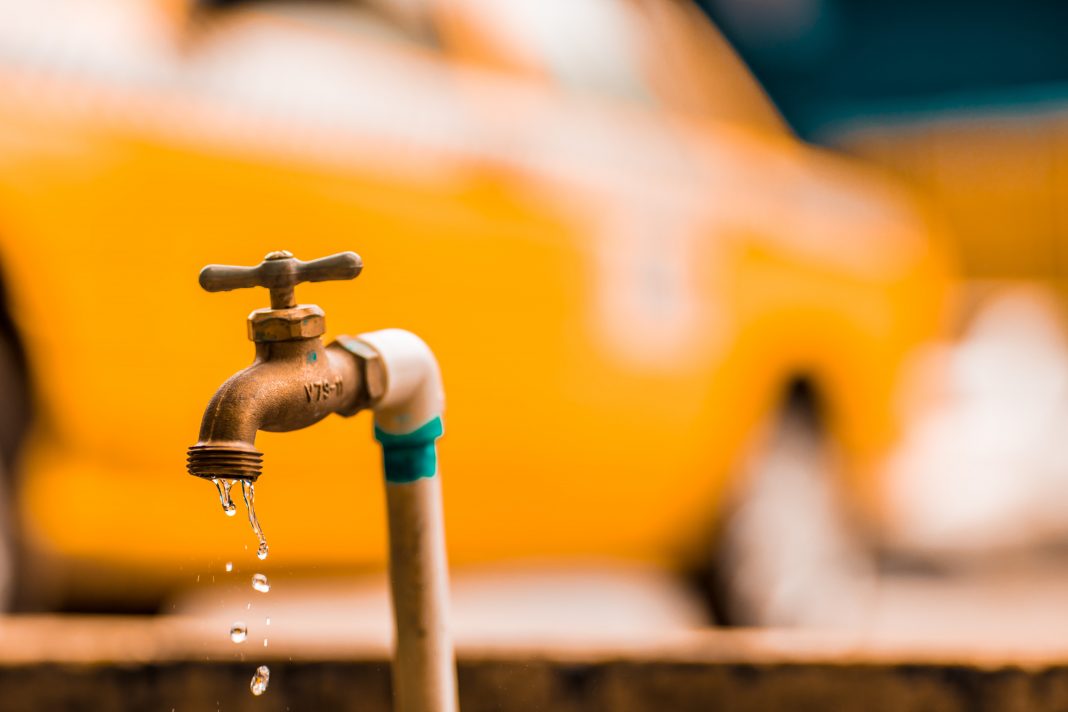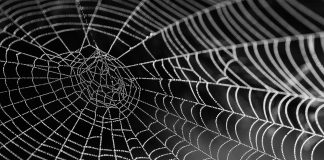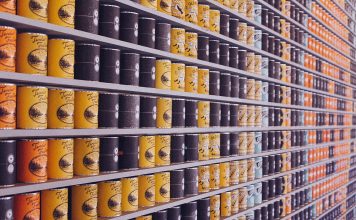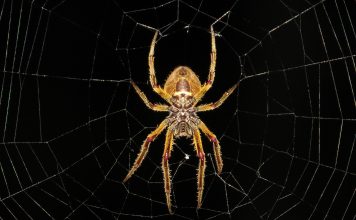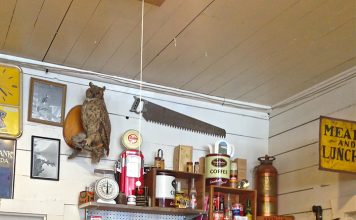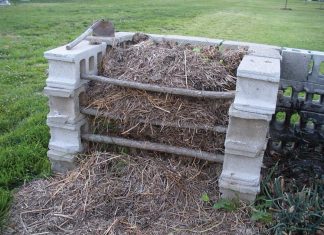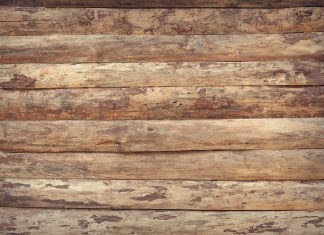 |
|
| Issue #94 • July/August, 2005 |
Perhaps one of the most important innovations in modern plumbing has been the development of polyvinyl chloride (PVC), chlorinated polyvinyl chloride (CPVC), and related plastic pipe. These materials have enabled the average homeowner or builder to become an expert in installing plumbing anywhere it is needed around the home. The versatility, durability, and simplicity of the pipes and the dozens of different types of fittings and couplings make just about any project a snap. The predominant material used in drain, waste, and vent applications, PVC pipe is also used extensively in cold-water delivery systems to or for buildings.
PVC pipe is available in a variety of lengths, diameters and pressure classes. It has a full complement of standard fittings, valves, and couplings. And it is compatible with other pipe materials, so it can be specified for either new construction or system upgrades.
|
It’s tough stuff. It is designed and manufactured to be that way. It provides time-tested resistance to costly leakage. It is corrosion resistant and reliable. It is not a conductor of electricity, nor is it affected by excessively hard or soft water, changes in water pH or the chemical constituents found in both domestic and industrial wastewater. When used in household plumbing systems, PVC pipe resists attack by cleaners and other household chemicals. Because PVC withstands conditions that other pipe materials cannot, it frequently is selected in place of, or to replace, other pipe materials.
PVC pipe is even flexible. It can bend without breaking. Both pipe and joint assemblies withstand pressure surges and shock. PVC pipe is resistant to impact, general wear, and abrasion, providing reliable service and less costly maintenance. With all this said, one of the best qualities of PVC pipe is simply that it is easy to work with.
Bend it, shape it
Some PVC projects require the PVC pipe to be bent. Although PVC pipe does have the quality that permits it to be bent somewhat, more drastic shaping calls for other methods in which it must be temporarily softened with heat. Heating the pipe to a point where it is malleable can be accomplished in a number of ways.
1. Hot water: Dip the piece to be worked into very hot or boiling water. Allow the pipe to heat completely through. As you work the piece, repeated dunkings into the hot water may be necessary.
2. Heat lamps: An ordinary heat lamp can heat PVC pipe to workable temperatures. Allow it to get thoroughly heated and resoften as needed.
|
3. Heaters: I have heated pieces of PVC pipe over the burner of the kerosene heater that I use in my workshop. It quickly softened the ends of the pieces I was working. Again, reapply heat as the piece cools and hardens.
Once you have the piece softened sufficiently, you can bend it, pinch it, and shape it.
Cutting and shaping
PVC pipe should be cut square with a wheeled tubing cutter or fine- toothed saw such as a hacksaw. A handy cutter that resembles hand pruners is also available. The ratcheting action makes it simple to cut pipe up to one inch in diameter. In my experience, however, it is difficult to make a precisely square cut when using these cutters. If that is important for your project, then use a saw. Otherwise, the ratcheting cutters are great for general cutting of PVC pipe.
Before gluing, pipe ends should be de-burred and wiped clean and dry, free of any oil or dirt.
Painting PVC pipe
As with any painting project, your goal is to apply a finish that is durable and wear resistant.
|
Prior to attempting to paint PVC, you must first give it a thorough cleaning to remove any grease, oil, or other contaminants that may be on its surface. After the surface is clean, use some fine sand paper or fine steel wool to rough the finish just enough to help the coating adhere better. Since PVC is not really designed to be painted, apply the selected coating in a small test area and check to make sure it adheres well before continuing with the entire project.
You may use a coat of primer paint to help your final finish coat adhere better. I have successfully painted many PVC items, and like anything else, find that if the item is used frequently or roughly, some touch up may be needed at some point.
As you begin to use the ideas presented in this article, as well as come up with many of your own, you will need to have a few basic tools on hand. Here’s a list of the common ones needed for most of the projects discussed here:
PVC pipevarious lengths and diameters
PVC fittingsvarious assorted
Pipe cutter
Hacksaw
Tape measure
Pencils
Pocket knife
Sandpaper
File
PVC Cleaner
PVC glue
Drill
Screws
Propane torch, heat bulb, or other device to heat pipe for bending or shaping.
Let’s get started on some simple and useful PVC projects for the homestead.
Row hoops
Possibly one of the best uses for joints of ½-inch PVC pipe is to create a miniature greenhouse in your garden.
|
The material combined with a sheet of heavy clear plastic, can make a great growing season extender in your own garden no matter how large a plot you have.
To construct your row covers, you will first need to cut twice as many 18-inch pieces of ¼-inch reinforcement rod (commonly called re-bar) as you have pieces of PVC pipe. Here on our place, I simply used light metal electric fence posts. They worked very well.
Drive one re-bar or fence post at the proper distance where you want the end of the PVC pipe to be. Continue down along either side of the row at about three or four-foot intervals. Directly across the row or seedbed, set another post. Place one end of the ½-inch pipe over one of the posts. Bend the pipe over like a hoop on an old covered wagon and slide it down over the other post. Repeat this down the row until you get the number of hoops set that you need.
Cut the plastic plenty long, so that you can gather it up and anchor it at the ends with big rocks or blocks. Allow for an extra 12 to 18 inches on either side as well. I used this extra plastic to help anchor the little structure. Simply take a piece of pipe or conduit, and utilizing a helper, hold the edge of the plastic to the pipe and roll it up over the pipe. After rolling it up a few times around the pipe, lay a block or rock on either end of the pipe to anchor the plastic.
PVC storage container
Occasionally, you may be presented with the need to store, cache, or hide items. Perhaps you wish to hide your egg money in something other than a fruit jar. You may feel the need to put away a firearm and supply of ammunition. Or you may just have something of value which you would like to hide away securely from prying eyes. A simple and durable storage container may be made in a few minutes by using scraps of appropriate sized PVC pipe. All it takes is a section of pipe of the proper diameter and length for the item or items that you are wishing to store. You can make these in 4, 6, 8, 10, or even 12-inch diameter.
|
Glue into place an end cap on one end of the pipe. On the other end, glue into place a collar with female threads to accept the same size male screw-in plug. You are all set.
When using your storage container, you may have the need to use a desiccant to prevent damage to the stored item. This is simply and cheaply done by merely tossing into the container an old sock or other cloth bag filled with rice. The rice will serve as a suitable moisture absorber. Another thing to do is to apply a bead of silicone sealer when you thread the cap into place. This will serve as a final moisture barrier.
Here’s another tip. If you choose to put your storage underground, that is, bury it vertically in a post-hole like hole, then consider this: Get a piece of black corrugated plastic drain tile in the next size larger than the PVC container you have. Dig the hole large enough to accommodate the black drain tile. Once it is in place, just drop your PVC container in. Cover with a large flat stone and cover with soil. If you are concerned about finding your storage site later, lay a piece of metal atop the stone before you cover it with earth. This will enable you to locate the site using a metal detector.
PVC hanging planter
An attractive hanging planter can be made from PVC pipe. To create your planter, first locate a piece of 4-inch PVC pipe in the length which you want your planter, something in the area of 16 to 24 inches works well.
Next, bore 1½-inch diameter holes in the pipe at points where you want plants in it. I spaced the holes staggered in rows up and down the piece of pipe; a row of three, turn the pipe 90 degrees, then a row of two. Add another row of three and another row of two turning the pipe as you go.
Next glue an end cap onto the bottom of the pipe with regular PVC cement. Near the center of the end cap, drill three or four small holes to allow for water drainage. At the top of the pipe, drill three holes of about 1/8 inch diameter at points dividing the circumference of the pipe into thirds.
|
To hang the planter, you may use twine, wire, chain, or whatever you have handy. I used four small S-hooks and some light chain. Equal lengths of chain (about 12 to 14 inches) were attached to the three small holes using S-hooks. The three pieces of chain were joined at the top by the fourth hook.
You can now add soil and your plants. You may also add a watering tube to the planter if you wish. Merely take a piece of ¾-inch PVC pipe about ½ to 1 inch longer than the planter and drill several small holes up and down its length. Position the small pipe in the center of the planter as you fill it with soil. You will end up with soil packed around the hollow center tube that will permit water to evenly reach all the plants in the planter.
This planter works especially well with plants such as geraniums, or other compact bushy flowers. Compact strawberries could also be planted in one of these planters.
Wildlife, livestock, or pet feeder
Using a piece of four-inch PVC pipe approximately four feet long, glue a threaded clean-out on one end. On the other end, glue a “Y.” Using another short piece of pipe about five to six-inches long, glue it into the bottom end of the Y. To that, glue in place another threaded clean-out. This handy feeder can be tied or wired onto a post or tree and used to feed farm animals such as goats or sheep, or wildlife. Merely remove the top threaded cap and pour the pipe full of feed and replace the cap. To occasionally clean out the feeder, you can simply remove the bottom clean-out plug, clean the feeder out, replace the plug and refill.
Cold frame cover
I made this cover for my cold frame from one-inch PVC pipe and a few fittings. It was designed and cut to fit the area that I had to cover. I cut the pieces to fit and then put it all together without glue to make sure everything fit properly. Next, the whole thing was glued together. I added some strong greenhouse plastic by doubling the ends and attaching it with screws and washers, making sure it was pulled taut all across the frame. Then, it was simply put in place to protect the small plants in the cold frame.
Bird feeder
A simple and easy bird feeder can be made from a short piece of 4-inch PVC pipe, an end cap, some stiff wire, and an old pie pan.
First, cut your pipe in the length that you want your feeder to be; 14 to 18 inches is good. Slide the end cap onto one end of the pipe. Just below where the cap fits, drill a couple of small holes that will take a piece of wire that the feeder will be suspended by.
|
On the other end, saw out a few notches around the circumference of the pipe. A couple of inches up from this end, drill two more small holes.
Drill two small holes in the bottom of the pie pan at points that will line up with the last two holes you drilled in the pipe, or close to it. Now, run each end of a length of wire from the pan bottom up and through the small holes, from the inside out. Bend the ends of the wire down to securely hold the pan in place.
You can see in the illustration that the wire will hold the pan in place while the notches that you cut in the bottom of the pipe will allow bird feed to settle into the pan. It is also a good idea to drill several small holes in the pie pan to allow rainwater to drain from it.
Cut a piece of wire to use as the hanger. Bends on each end of the wire are inserted into the holes near the top of the pipe. Now just remove the end cap to fill the feeder, then hang it in a good spot near some cover. The birds will soon find it.
You may also paint the feeder as you wish, a solid color, or add some hand-painted flowers, etc.
Bird feeder post (squirrel-proof)
If you are erecting a birdhouse or feeder on a wooden post, squirrels and raccoons can become a real pest. Try this to keep the furry pilferers from climbing up the post. Simply use a section of 4-inch PVC pipe as your post. This will keep uninvited critters from helping themselves. They will not be able to climb up the slick surface of the PVC pipe.
The addition of a toilet flange at the top of the post can provide a sturdy mount for your birdhouse or feeder.
For many more ideas on using PVC Pipe around your place, look for this new book by Charles Sanders: PVC Projects-101 Uses for PVC Pipe on the Home, Garden, Farm, and Workshop. It is vailable in the BHM bookstore. Just click on the title, above.


